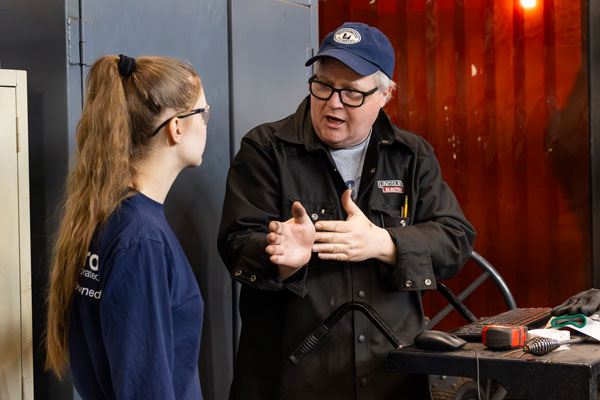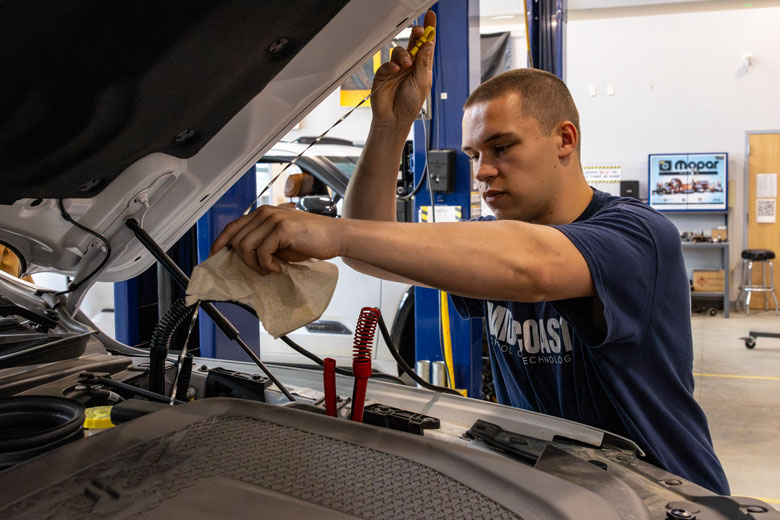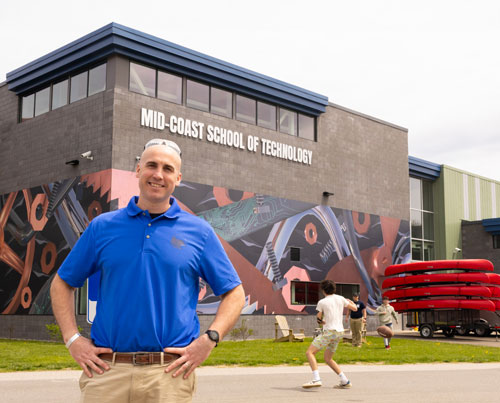
Want an antidote to your gloomy thoughts about the worker shortage and the long waiting lists to hire plumbers, electricians, and carpenters, and the equally long wait time to schedule car repairs and medical appointments? Then tour a facility like Rockland’s Mid-Coast School of Technology where the next generation of workers is already getting its hands dirty.
The facility’s vibe is more software design than vocational school, with its bright, airy spaces. The students are engaged, cheerful, and comfortable chatting about the work they are immersed in, from grinding steel to preparing croissants, from testing computer systems on a truck to studying nursing protocols, from applying finish to bookshelves to writing computer code.
Clearly, this isn’t your father’s trade school.
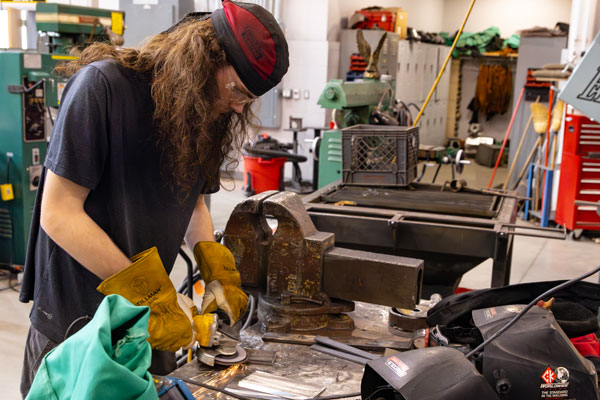
The facility is the result of a $26 million bond approved by Knox County voters in 2016. Director Robert Deetjen is grateful, he said during a tour of the school, for the community’s support, and also is grateful that construction concluded in 2019 just before the pandemic.
The investment is paying dividends.
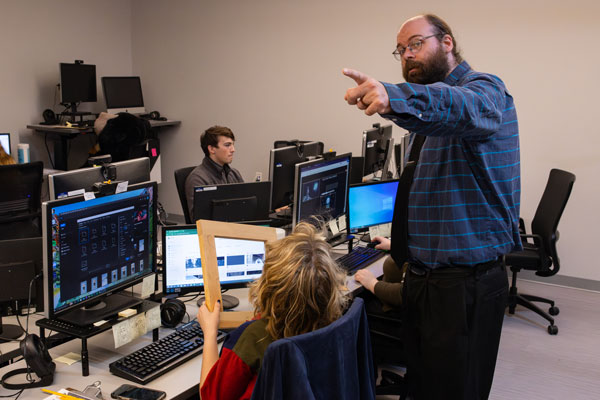
“A majority of our students stay, or at least stay in Maine,” he said.
A typical day will see as many as 300 students in the building, which serves students who attend from Camden Hills Regional, Oceanside, and Medomak Valley high schools. But in all, the facility serves over 500, including those working remotely from their high schools on Vinalhaven, North Haven, and Islesboro, and students at Pen Bay Christian School in Rockland and homeschoolers.
There is far more interest in the diverse programs the school offers than it can accommodate, Deetjen says, with, for example, 60 applying for the small engine program which can only include 16. Staff interview prospective students and must turn away most.
“That’s the hard part,” he says. Students list ranked choices when they apply, so they may land in a second or third requested class.
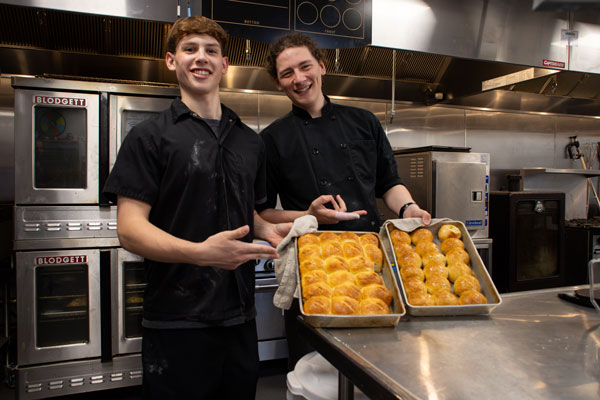
The programs typically run for two years, beginning in the junior year, and students sometimes switch out of one, realizing the work is not for them. This is a win, Deetjen says, since time isn’t wasted pursuing a career that won’t be satisfying.
On our tour, we see scenes that may align with the images we have of vocational education—students grinding steel under the watchful eye of their instructor, another applying finish to newly built bookshelves, and others working dough for what will become croissants.
But there are some surprises, like students working with representatives of Shepard Toyota in nearby Thomaston. Two new large pickups are in the shop—one retailing for $100,000, the other for $80,000—and students are learning to connect diagnostic equipment to the vehicles’ various computer systems.
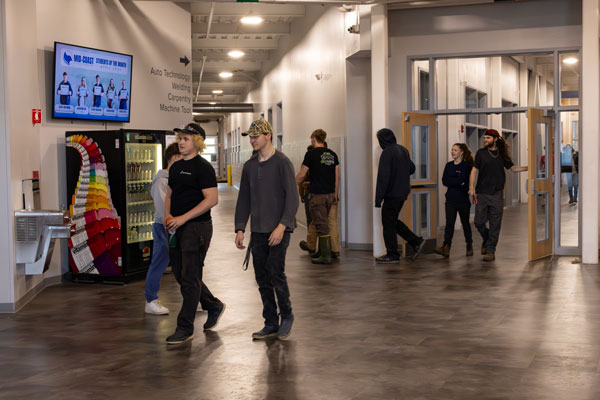
Deetjen notes that several private sector businesses are involved in the education at the Mid-Coast School of Technology, providing tools, materials, and actual job opportunities.
Instructor Tom Vannah says the real-world work “takes the ‘scary’ out of it,” and allows students to see the jobs that exist in this realm: automotive technician, parts manager, body shop work, and sales.
Though hands-on is key, students spend considerable time in a small classroom adjacent to the large shop area, where they attend lectures. This component is part of almost all the programs.
And the work isn’t random. Vannah says students perform 200 assigned tasks on vehicles over their two years.
Deetjen observes that dealerships hire diagnostic engineers who identify problems and assign the work to mechanics. It’s problem solving, he says, and adds that almost all the programs boil down to this sort of critical, analytic thinking.
Computer design is another surprise, with students hunched over laptops writing code. Many are aiming for careers creating video games, though they also learn to do audio and video editing, so one of these students may work on a movie you stream on Netflix in a few years.
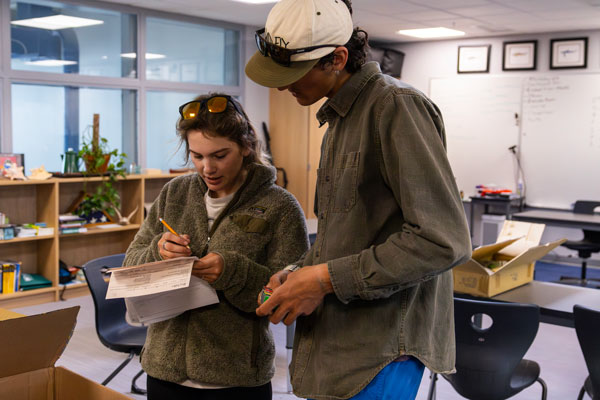
Students in the outdoor leadership program have just returned from a two-night camping trip on Black Island in Penobscot Bay and under their teacher’s direction, are unpacking and inventorying their gear.
They are aiming for guide licenses; some will end up in the military, or working for land trusts, and some will pursue a degree in the field at Washington County Community College. Local outdoors outfitter Maine Sport works with the class.
Seth Walton, the instructor, says the overnight trips are not unusual.
“We’re probably out of the building 75% of the time,” he says.
There aren’t many students in the medical program’s classroom, Deetjen explains, because half of them are doing “clinicals,” actually working in area nursing homes and hospitals to learn skills. Most achieve CNA licensing by the time the program ends, but most go on to become RNs, he says.
In the building, they sit through five-and-a-half hours of lectures.
The culinary program students are preparing croissants when we stop by. The program serves lunch for six weeks each semester, serving 70 people a day with four entrees and dessert.
In the marine program, a young man proudly shows visitors a boat he finished. The hull was developed by a student who has since graduated, a passing of the baton that’s common here.
Deetjen, who taught in a traditional school before this job, heartily confirms the observation that students here seem engaged and, well, happy to be here. National statistics show that career students graduate at higher rates than those in traditional high schools.
